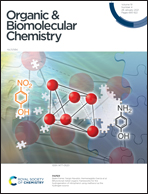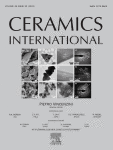В журнале Pharmaceutics (IF 6,321) опубликована статья с участием сотрудников Института к.х.н., Е. В. Суслов (зам.дир. по науке, завлаб ЛНТПС), Е.С. Можайцева (мнс ЛНТПС), А.А. Мункуева (аспирант, мнс ЛНТПС), Д. Цыпышева (мнс ЛФАВ, аспирант), к.х.н. А.Д. Рогачева (снс ЛФАВ) и д.х.н. К.П. Волчо (гнс, ЛФАВ):
Novel Multitarget Hydroxamic Acids with a Natural Origin CAP Group against Alzheimer’s Disease: Synthesis, Docking and Biological Evaluation
Margarita Neganova, Yulia Aleksandrova, Evgenii Suslov, Evgenii Mozhaitsev, Aldar Munkuev, Dmitry Tsypyshev, Maria Chicheva, Artem Rogachev, Olga Sukocheva, Konstantin Volcho andSergey Klochkov Pharmaceutics 2021, 13(11), 1893, Published: 8 November 2021
Abstract
Hydroxamic acids are one of the most promising and actively studied classes of chemical compounds in medicinal chemistry. In this study, we describe the directed synthesis and effects of HDAC6 inhibitors. Fragments of adamantane and natural terpenes camphane and fenchane, combined with linkers of various nature with an amide group, were used as the CAP groups. Accordingly, 11 original target compounds were developed, synthesized, and exposed to in vitro and in vivo biological evaluations, including in silico methods. In silico studies showed that all synthesized compounds were drug-like and could penetrate through the blood–brain barrier. According to the in vitro testing, hydroxamic acids 15 and 25, which effectively inhibited HDAC6 and exhibited anti-aggregation properties against β-amyloid peptides, were chosen as the most promising substances to study their neuroprotective activities in vivo. All in vivo studies were performed using 5xFAD transgenic mice simulating Alzheimer’s disease. In these animals, the Novel Object Recognition and Morris Water Maze Test showed that the formation of hippocampus-dependent long-term episodic and spatial memory was deteriorated. Hydroxamic acid 15 restored normal memory functions to the level observed in control wild-type animals. Notably, this effect was precisely associated with the ability to restore lost cognitive functions, but not with the effect on motor and exploratory activities or on the level of anxiety in animals. Conclusively, hydroxamic acid 15 containing an adamantane fragment linked by an amide bond to a hydrocarbon linker is a possible potential multitarget agent against Alzheimer’s disease. View Full-Text
Keywords: natural compounds; hydroxamic acids; camphane; fenchane; adamantane; molecular docking; histone deacetylase 6; β-amyloid aggregation; 5xFAD transgenic mice; Alzheimer’s disease
Альметрики:



















